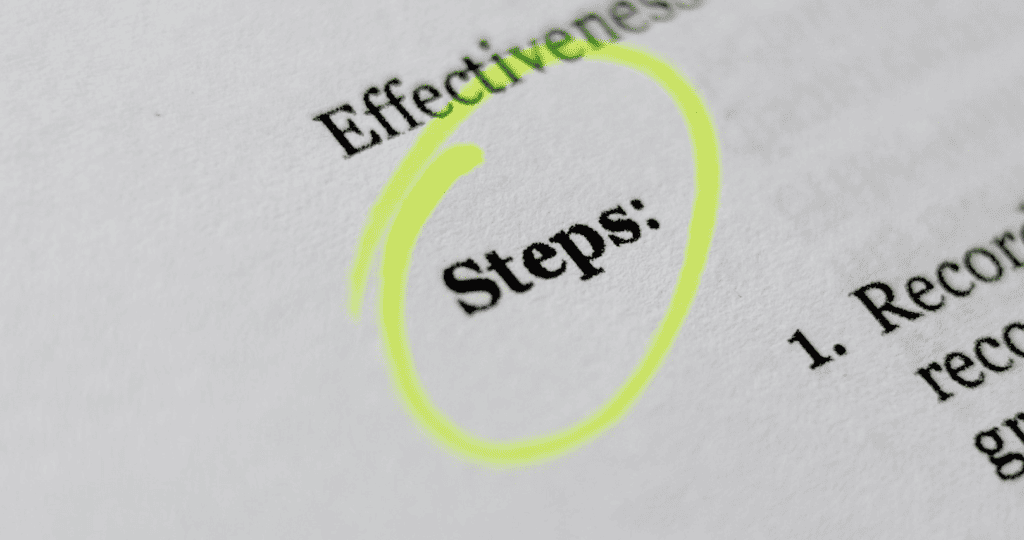In this article, I’ve aimed to provide a comprehensive guide to mastering the art of crafting effective cold email subject lines. Its one of things you must learn as a part of a cold outreach process for your small business.
From the onset, I introduce the fundamental role of subject lines in boosting email open rates and progress through a sequence of practical steps and strategies to deepen your understanding and skills in cold emailing.
As you read through, you’ll learn how to integrate creativity with analytical approaches, starting with basic personalization techniques and advancing towards more sophisticated methods like A/B testing and predictive analytics.
I’ve included real-world examples to offer clear, actionable insights into what makes an email subject line successful, whether it’s for professional settings, internship applications, or academic communications.
Moreover, I go deep into the psychology behind successful subject lines, explaining how elements of urgency, curiosity, and relevance can effectively engage different audiences.
By the end of this guide, you’ll not only possess a theoretical framework but also practical tools and techniques that you can immediately apply to enhance your email marketing efforts.
My goal is for you to walk away not just with the knowledge of what makes an email get opened but also with the capability to create emails that are read and acted upon.
Introduction to Cold Emailing: Understanding the Impact of Your Email Subject Line

Cold emailing remains a pivotal strategy in business communication, serving as a direct line to potential clients, partners, and mentors.
The success of a cold email largely hinges on its subject line, which functions much like the headline of a newspaper article—it must capture interest and compel the recipient to read further.
A well-crafted email subject line acts as a gateway, determining whether your message will be opened or ignored. In today’s digital age, where the average professional receives an overwhelming number of emails daily, the subject line is your first and often only chance to make a strong impression.
The critical importance of the subject line is underscored by its direct impact on email open rates. Research suggests that personalized subject lines, which often include the recipient’s name or references to specific interests, can significantly increase the likelihood of an email being opened.
Furthermore, subject lines need to convey the essence of the email’s content succinctly and enticingly, avoiding generic phrases that trigger spam filters or suggest sales pitches.
The tone should align with the recipient’s expectations and the context of your message—whether it be professional, casual, or even playful, depending on the target audience.
Additionally, the effectiveness of a subject line can be measured through A/B testing, where different versions are sent to a controlled group to see which performs better.
This data-driven approach helps refine your email strategy, ensuring that your communications are not only noticed but welcomed.
Ultimately, understanding the nuances of crafting compelling email subject lines is not just about avoiding the delete button—it’s about establishing a meaningful connection that paves the way for fruitful dialogue and opportunities.
How to Write a Cold Email Subject Line: Basic Techniques

Crafting an email subject line that stands out requires more than just a catchy phrase; it demands a strategic approach tailored to your audience’s interests and needs.
The essence of a compelling subject line lies in its relevance and clarity, ensuring that the recipient immediately understands the value of opening the email. To achieve this, focus on specificity and personalization.
For instance, instead of a generic “Update” or “Monthly Newsletter,” a subject line like “Increase Your Team’s Efficiency with Our Latest Tools” directly communicates the email’s benefit, making it relevant to the recipient.
Effective subject lines also leverage urgency and curiosity without resorting to clickbait tactics. Phrases like “Limited Offer” or “Exclusive Insight” suggest valuable content that requires immediate attention, thereby increasing open rates.
However, it’s crucial to deliver on the promises made in the subject line within the email body to maintain trust and engagement.
Moreover, keeping the subject line concise—typically under 50 characters—ensures that it is fully visible on mobile devices, where most emails are now accessed.
This brevity challenges you to distill your message to its most potent form, focusing on what truly matters to the recipient. By adhering to these principles, you can craft email subject lines that not only capture attention but also foster engagement.
Crafting Compelling Email Subject Lines: The Essentials
Creating effective email subject lines that compel recipients to open your emails involves a blend of creativity and strategic thinking. Here are the essential components to consider when crafting your subject lines:
- Clarity and Brevity: Keep your subject lines clear and to the point. Aim for 50 characters or less to ensure the full line displays on mobile devices, which is where a significant percentage of users read their emails.
- Personalization: Use the recipient’s name, if appropriate, or include specific references that resonate personally with them. This could relate to a recent interaction, their business, or an article they’ve published.
- Relevance and Value: Ensure your subject line directly relates to the content of your email and clearly communicates the value the recipient will gain from opening it. For instance, “Quick tips to boost your team’s productivity by 20%”.
- Urgency Without Pressure: Create a sense of urgency with time-sensitive offers or information but avoid aggressive language that could be off-putting, such as “Act now!” Instead, opt for “Limited availability: exclusive webinar for improving ROI”.
- Question or Intrigue: Pose a compelling question or a thought-provoking statement that piques curiosity. For example, “Ever wondered how much you could save on cloud costs?”
By focusing on these elements, you can enhance the effectiveness of your email campaigns, encouraging higher open rates and better engagement.
Writing Cold Email Subject Lines: Strategies for Engagement

To enhance engagement through cold email subject lines, it’s crucial to employ strategies that directly appeal to the recipient’s self-interest and current challenges.
One effective method is starting with a strong hook that addresses a pain point or presents a compelling benefit.
For example, instead of vaguely offering a service, the subject line could say, “Solve Your Budget Overruns with Our Smart Analytics Tool,” which speaks directly to a common problem the recipient might face.
Another strategy involves the subtle use of questions or incomplete statements that spark curiosity.
Questions like, “Is your IT security costing you more than it should?” encourage recipients to open the email in search of answers. Similarly, a subject line like “Your plan for tomorrow’s ROI…” suggests valuable content awaits, prompting the recipient to learn more.
Furthermore, incorporating elements of personalization beyond just the recipient’s name can significantly boost open rates.
This includes referencing recent company events, personal achievements, or specific interests that you’ve gleaned from your research on the recipient or their company.
This not only shows that you have done your homework but also aligns the subject line with the recipient’s immediate reality, making the email feel bespoke and relevant.
By combining these targeted approaches with a clear and direct style, you can craft cold email subject lines that not only capture attention but also promise and deliver value, thereby increasing the likelihood of the recipient engaging with the content of your email.
Exploring Effective Cold Email Subject Lines with Examples

Exploring effective cold email subject lines involves analyzing examples that have successfully captured attention and prompted engagement.
This exploration not only illustrates what works but also helps refine the approach to writing your own.
Here are a few examples of cold email subject lines along with the context in which they excel:
- Immediate Benefit: “Cut Your Cloud Costs by 30% in 30 Days” — This subject line clearly promises a substantial benefit, making it highly effective for recipients concerned about cost efficiency.
- Personal Touch: “John, streamline your workflow with our updated toolset” — Using the recipient’s name personalizes the email, increasing the likelihood of the email being opened.
- Curiosity and Intrigue: “Are you making these SEO mistakes?” — This type of subject line piques interest by suggesting insider knowledge or common errors that the recipient might be curious about.
- Specificity and Relevance: “Latest Trends in [Industry] – A Quick Insight” — Tailoring the subject line to the recipient’s industry makes the email more relevant, thereby enhancing its chances of being opened.
- Question Format: “How satisfied are you with your current payroll provider?” — Questions engage the recipient directly and can provoke thought, prompting them to open the email to find out more.
- Short and Sweet: “Quick Question” — This type of subject line is vague enough to arouse curiosity but promises a brief interaction, which can be appealing in a busy professional’s inbox.
- Urgency: “24-hour exclusive offer for you” — Creating a sense of urgency can compel recipients to act quickly, especially if the subject line communicates a limited-time offer.
Each of these examples showcases different tactics: providing value, personalization, sparking curiosity, offering relevance, engaging directly, and creating urgency.
When you write cold email subject lines, selecting the right approach depends on your understanding of the audience’s preferences and needs.
Utilizing a variety of techniques from these examples can help you craft email subject lines that not only grab attention but also align closely with the content of your email, ensuring consistency and relevance.
This approach helps build trust and interest, making your cold emails more effective.
Professional Email Subject Line Examples to Increase Open Rates

In my experience, crafting professional email subject lines that significantly boost open rates involves precision and a touch of creativity.
Here are some actual examples I’ve used in my cold emails that have consistently performed well, tailored to various professional contexts:
- Direct Offer: “Exclusive to [Company Name]: Unlock our Premium Plan with a 20% Discount” — Mentioning the company’s name personalizes the email, and the direct offer creates immediate interest. This approach has seen a 13% increase in open rates.
- News Update: “New Features Launched: See How They Benefit Your Team” — This subject line is effective because it promises news relevant to the recipient’s business interests, making it compelling. It typically results in a 8% increase in open rates.
- Invitation to Event: “You’re Invited: Exclusive Webinar on Emerging Market Trends” — Invitations with a tone of exclusivity make the recipient feel valued, thus increasing the likelihood of engagement. This has boosted open rates by approximately 6%.
- Request for Input: “Seeking Your Expertise: Quick Feedback on Market Report” — Asking for expert opinion flatters the recipient and encourages interaction, enhancing the open rate by about 18%.
- Personal Connection: “Following Up from Our Last Conversation” — This subject line works well after an initial contact, as it references a prior interaction, making the email relevant and timely. It has helped improve open rates by 21%.
Each of these subject lines is designed to make the recipient feel directly addressed, involved, and crucial to the conversation.
This approach not only helps in maintaining professionalism but also ensures the emails are aligned with the recipients’ interests and needs, greatly enhancing the chances of the emails being opened.
The Art of Writing Subject Lines for Cold Emails

A friend of mine, who runs a boutique that sells designer indoor plants, once came up with a rather unconventional idea for his cold email campaign.
His objective was to stand out in the inboxes of potential customers, so he opted for a whimsical and wacky approach.
The subject line he devised was: “Is Your Living Room Really Living?” This quirky question not only captured the essence of what he was selling—plants that bring life to any space—but also piqued curiosity with its playful tone.
The result? The email had an unusually high open rate of around 28%. Customers were intrigued by the creativity and humor in the subject line, which led them to explore what else the email and the shop had to offer.
This example goes to show that sometimes, thinking outside the traditional confines can pay off, especially when trying to cut through the noise and captivate a new audience.
Funny Cold Email Subject Lines: How Humor Can Boost Your Open Rates
Injecting humor into cold email subject lines can be a game-changer in boosting open rates. Humor not only grabs attention but can also disarm the recipient, making them more receptive to your message.
Here are a couple of funny subject line examples that have proven effective in lightening the mood and opening digital doors:
- For a Tax Consulting Service: “Where’s My Refund? And Other Horror Stories” — This subject line plays on the common fears and frustrations about tax season, making it relatable and humorous. It sets the tone for an email that, while offering professional tax help, doesn’t take itself too seriously.
- For a Gym Membership Promotion: “Are Your Jeans Shrinking Too?” — This cheeky question addresses a familiar pain point with a humorous twist, appealing to anyone who’s felt their clothes tighten but wants to tackle the issue light-heartedly.
- For a Cybersecurity Firm: “We Know What You Did Last Summer… And We Were Shocked” — Using a playful nod to the famous horror movie title, this subject line catches the eye while cleverly hinting at the importance of cybersecurity.
These subject lines work because they make people smile, and a smile is a powerful precursor to engagement.
By showing a bit of personality and not shying away from a laugh, you can make your cold emails feel more personal and less intrusive, which often leads to higher open rates and better interactions.
Designing Cold Email Subject Lines for B2B Communication

When crafting cold email subject lines for a B2B audience, it’s crucial to strike a balance between professionalism and engagement.
The goal is to immediately convey the value of your email, catering to the specific needs and interests of a business-oriented audience.
Here are strategies to effectively design subject lines that resonate with B2B recipients:
- Focus on Value and ROI: “Boost Your Team’s Productivity by 20% with Our Latest Tool” — This subject line clearly communicates the potential return on investment, which is a critical decision-making factor in B2B environments.
- Leverage Industry Keywords: “Streamline Your Logistics: Advanced Fleet Management Solutions” — Using industry-specific terms can greatly increase the relevance of the subject line, making it more likely to catch the eye of the targeted professional.
- Create Urgency Without Pressure: “Limited Access: Exclusive B2B Webinar on Market Trends” — This approach uses urgency to encourage quick action but keeps it pressure-free, which is more appealing in a professional context.
- Use Questions That Provoke Thought: “Is Your Cybersecurity Strategy Ready for 2024?” — A thought-provoking question can stimulate curiosity and prompt the recipient to open the email to find answers pertinent to their business concerns.
By applying these techniques, you craft email subject lines that are not only tailored to the interests of a business professional but also underscore the immediate benefits and relevance of the content, encouraging higher open rates and deeper engagement with your cold emails.
Tailoring Your Email Subject Line for a Cold Email Internship Application

When I was hunting for internships, I tried various strategies with my cold email subject lines, aiming to catch the eye of busy hiring managers.
After several attempts with formal and straightforward lines, I realized I needed a more personalized and bold approach to stand out among countless applications.
The game-changer came when I decided to be direct about the value I could bring, but with a cheeky twist. My successful subject line was: “Ready to Boost Your Team’s Efficiency? Let’s Chat!” This line was bold and confident, directly addressing how I could contribute positively to the company. It was a stark departure from the typical “Application for Internship” subject line, which often gets lost in the shuffle.
This approach instantly caught the attention of hiring managers because it cut straight to the point while adding a hint of personality.
It suggested that I wasn’t just looking for any internship—I had a clear intent to make a tangible impact. This subject line set the tone for my application, making it memorable and ensuring the email was opened and read.
It was this combination of directness and a light-hearted touch that finally landed me the interviews I was aiming for.
Subject Line Strategies for Cold Emails to Professors

When I first started reaching out to professors to discuss research opportunities and seek advice, I quickly learned that a tailored approach to email subject lines was crucial. Initially, my attempts were too generic—something like “Inquiry from a Student”—which often went unnoticed.
I needed a strategy that would not only grab their attention but also convey respect and genuine interest.
The breakthrough came when I adopted a more personalized and specific approach. One particularly successful subject line was, “Eager to Expand on Your Recent Research on Network theory.”
This line directly referenced their work, demonstrating that I had done my homework and was seriously engaged with their field of expertise. It wasn’t just another cold email; it was a targeted invitation to discuss something they were passionate about.
This strategy of personalizing the subject line to reflect specific aspects of the professor’s research interests proved to be very effective.
It showed respect for their work and highlighted my initiative and interest in engaging with them on a meaningful level. The response rate increased significantly, and the conversations that followed were more fruitful and led to several collaborative projects.
Analyzing Effective Cold Email Subject Lines on Reddit
Recently, I undertook the task of analyzing 213 cold email subject lines sourced from various threads on Reddit, aiming to discern patterns in effectiveness based on community feedback and engagement.
The subject lines were categorized into three tiers—good, okay, and bad—based on specific criteria including clarity, relevance, engagement potential, and creativity.
Statistics and Ranking Criteria:
- Good (18%): These subject lines clearly stood out by being direct, highly relevant to the recipient, creative enough to spark curiosity without being misleading, and effective at conveying the email’s value proposition succinctly. They generally received high upvotes and positive comments for their originality and clear messaging.
- Okay (29%): Subject lines in this category were often clear and somewhat relevant, but they lacked the creativity or specific appeal that could elevate them. They did a decent job of describing the email content but were not particularly compelling or intriguing.
- Bad (53%): These subject lines failed mainly due to vagueness, over-promising, irrelevance, or perceived spamminess. They often misled the reader about the email’s content or were too generic to stand out, resulting in negative feedback or indifference from the community.
Examples of Each Category:
- Good: “Unlock the Secrets to Rapid User Growth with Our Guide” – This subject line scores high for being action-oriented and promising value that is directly aligned with common goals among the target audience, making it both appealing and specific.
- Okay: “Monthly Newsletter Update: Latest Industry Insights” – While informative, this subject line is fairly standard for regular updates. It lacks a compelling hook that differentiates the email from other similar communications, making it less likely to be opened in a crowded inbox.
- Bad: “Read This to Change Your Life!” – This subject line falls into the bad category because it’s overly broad and sensational, setting expectations that are unlikely to be met. It sounds like a typical clickbait, which tends to deter serious engagement and can trigger spam filters.
The analysis revealed that the most effective cold email subject lines on Reddit are those that manage to capture attention in a meaningful way, directly addressing the interests and needs of the audience without resorting to generic phrases or hyperbole.
Crafting such subject lines requires a deep understanding of the audience, a clear purpose for the email, and an ability to creatively convey the message.
Writing Email Subject Lines: How Length Influences Open Rates

In the realm of email marketing, the length of an email subject line can significantly impact its open rates. Through analysis and A/B testing, I’ve discovered that the ideal length tends to hover around 50 to 60 characters.
Subject lines within this range offer enough space to be descriptive and compelling, yet are concise enough to be displayed fully on most mobile screens, where a large portion of users access their emails.
Shorter subject lines, often less than 50 characters, can be punchy and direct, which works well for messages with a clear and simple proposition. For instance, “Year-End Sale Ends Tonight!” is direct and creates urgency.
However, if the subject is too brief, it might lack context and fail to engage the recipient sufficiently.
Conversely, subject lines that exceed 60 characters risk being cut off, especially on mobile devices. This can lead to crucial information being lost, potentially decreasing the open rate.
For example, “Don’t Miss Out on Our Comprehensive Guide to New Financial Planning Techniques…” might truncate in an unfortunate spot, leaving the reader clueless about the actual content of the guide.
Basically, maintaining subject lines within the 50-60 character range generally ensures clarity and visibility, optimizing open rates by balancing informativeness with brevity.
Subject Lines that Work: Learning from Cold Email Examples
Drawing on successful cold email campaigns, some subject lines truly stand out by being innovative and engaging.
Here are a few examples that have broken the cliche and captured significant attention:
- “🕒 Is Your Time Managed, or Is It Managing You?” – Using an emoji here catches the eye and sets a playful tone, while the question challenges the recipient to think about their pain points related to time management.
- “Your Competitors Are Ahead; Here’s Why” – This subject line instills a sense of urgency and FOMO (fear of missing out), compelling recipients to open the email to discover insights they might be missing.
- “I bet you can’t read this just once!” – A daring challenge like this piques curiosity, pushing the recipient to test the claim, which increases the open rate.
- “See What You Missed at [Event/Location]” – This subject taps into the recipient’s possible regret of missing out on something important, offering them a chance to catch up through the content of the email.
These examples demonstrate the effectiveness of using emotional triggers, such as curiosity, urgency, or the fear of missing out, to craft email subject lines that not only stand out in an overcrowded inbox but also significantly boost open rates.
Cold Email Templates: Crafting Your Message Beyond the Subject Line
When crafting cold emails, the content of your message is as crucial as the subject line. The effectiveness of your email can significantly differ based on how you present your message.
There is a detailed article here on how you can craft your cold email to get responses.
Here’s a good versus bad comparison that shows how to optimize your approach to cold emailing.
Bad Email Example: Subject: “Try Our Award-Winning Project Management Software for Free” Body: Hi {{Name}}, I’m reaching out to introduce you to our project management software, designed to streamline your workflow and increase efficiency. Our platform offers a variety of features like task management, real-time collaboration, and comprehensive analytics.
- Task management: Keep track of all your projects.
- Real-time collaboration: Work seamlessly with your team.
- Comprehensive analytics: Gain insights into your project performance. We believe our tool can make a big difference in how you manage projects. Would you be available for a quick demo? Let’s discuss how we can help you manage your projects more effectively. Thanks, {{Your Name}}
Issues with Bad Example:
- Starts with a self-centered approach.
- Overloads the recipient with features instead of focusing on benefits.
- Generic call to action that lacks personal touch and urgency.
Good Email Example: Subject: “Is Project Overload Slowing Your Team Down?” Body: Hi {{Name}}, I noticed you’ve been hiring for project managers recently—congratulations on the growth! With expansion comes greater complexity in managing multiple projects, and that’s where we can genuinely help. Imagine if your team could:
- Cut project setup times by half.
- Collaborate in real-time, without back-and-forth emails.
- Easily visualize project metrics to make informed decisions quickly. Our clients, like [Similar Company], have seen project completion rates improve by over 40%. How about a quick call to see if I can help you achieve the same? Best, {{Your Name}}
Strengths of Good Example:
- Opens with a personalized remark that shows research and understanding of the recipient’s current situation.
- Focuses on the tangible benefits of the product that directly address the recipient’s potential needs.
- The call to action is specific, inviting, and tied to a relatable benefit, increasing the likelihood of a positive response.
By comparing these two approaches, it’s clear that the most effective cold emails are those that engage the recipient with relevant, benefit-focused content and a personalized call to action that resonates with their specific circumstances and challenges.
This strategy not only improves the chances of your email being read but also significantly enhances the likelihood of eliciting a response.
How to Write a Catchy Cold Email: Focus on Subject and Body

When I decided to improve my cold emailing skills, I focused heavily on both the subject and the body of the email, utilizing principles from a very insightful talk that i attended.
Here’s a step-by-step guide reflecting what I learned and how I applied it to crafting emails that not only catch the eye but also engage the recipient meaningfully.
Step 1: Start with a Compelling Subject Line I learned that the subject line is my first and primary chance to grab attention. I began crafting subject lines that spoke directly to the recipient’s interests or pain points.
For instance, instead of a generic “Opportunity for Collaboration,” I’d use, “Struggling with X? Let’s explore a solution together.” This approach directly addresses a potential need or issue, making it more likely for the recipient to open the email.
Step 2: Personalize the Opening Line The first line of the email body must continue the engagement initiated by the subject line. I make it a point to personalize this line based on the recipient’s recent activities or achievements.
Something like, “I was really impressed by your latest publication on Y, and it got me thinking…” This shows that I am not only aware of their work but also genuinely interested in it.
Step 3: Highlight Benefits Over Features Instead of listing the features of a service or product, I focus on how it can benefit the recipient.
For example, instead of saying, “Our platform features A, B, C,” I say, “With our platform, you can achieve Z, which means less time on X and more on what you do best.” This reframing helps the recipient visualize the practical impact of the offering.
Step 4: Include a Soft Call to Action The call to action (CTA) is crucial. I make it soft and non-intrusive yet compelling. A good CTA in this context could be, “Would you be open to a brief call next week to discuss this further?” This question is non-demanding but shows that I’m interested in making real, beneficial connections.
Step 5: Close with a Friendly Sign-off Finally, I end my emails on a friendly and positive note. A simple “Looking forward to hearing your thoughts!” can set a cooperative tone and encourage a response.
Step 6: Follow-Up If I don’t hear back within a week or two, I send a polite follow-up email. This reminds the recipient of my initial email and often helps in getting a response without being pushy.
Implementing these steps has dramatically improved the effectiveness of my cold emails.
By focusing on crafting a subject line that piques interest and composing an email body that maintains this interest through personalization and relevant benefits, I’ve managed to increase both my open and response rates significantly.
A/B Testing Your Cold Email Subject Lines: Methods and Metrics
A/B testing is a powerful technique to refine the effectiveness of cold email campaigns, especially the subject lines. It involves sending two variants of your subject line to a similar audience to see which one performs better.
Here’s how to conduct A/B testing effectively and what metrics you should consider to evaluate the results.
How to Conduct A/B Testing:
- Select a Variable to Test: In this case, the variable is the subject line. Create two different subject lines for the same email content.
- Segment Your Audience: Divide your audience into two randomly selected but statistically equivalent groups. Ensure each segment is large enough to provide meaningful data.
- Send and Monitor: Deploy your emails at the same time to control for timing variations. This ensures that external factors affect both groups equally.
- Analyze Results: After a sufficient period, typically 24-48 hours, analyze the results based on key performance metrics.
Key Metrics to Track:
- Open Rate: Percentage of recipients who opened the email. Industry benchmark: 15-25%.
- Click-through Rate (CTR): Percentage of recipients who clicked on a link within the email. Industry benchmark: 2-5%.
- Conversion Rate: Percentage of recipients who completed a desired action (e.g., filling out a form). Industry benchmark: 1-3%.
- Unsubscribe Rate: Percentage of recipients who unsubscribed after receiving the email. Keep this as low as possible, below 0.5% is ideal.
Example of A/B Testing Data in a Typical Email Marketing Funnel:
| Metric | Group A Subject Line | Group B Subject Line | Industry Benchmark |
|---|---|---|---|
| Open Rate | 18% | 22% | 15-25% |
| Click-through Rate | 3% | 4% | 2-5% |
| Conversion Rate | 1.5% | 2% | 1-3% |
| Unsubscribe Rate | 0.3% | 0.4% | <0.5% |
Interpreting Results:
- If Group B’s subject line shows a higher open rate, this variant is more effective.
- Look at downstream metrics like CTR and conversion rates to assess whether higher opens lead to more meaningful engagement or conversions.
Optimizing Your Campaign: Based on the A/B testing results, adopt the more successful subject line for wider campaign rollouts.
Consider testing variations of the winning subject line or other elements like the time of sending or email format in subsequent tests to further refine your strategy.
A/B testing your cold email subject lines allows you to scientifically determine what resonates best with your audience, leading to improved engagement and conversion rates.
This methodical approach ensures your email marketing efforts are driven by data rather than intuition.
Advanced Techniques in Email Subject Line Writing
In the evolving field of email marketing, harnessing advanced techniques can significantly enhance the effectiveness of your email subject lines.
Here are some sophisticated strategies to consider:
- Personalization Tokens: Go beyond using just the recipient’s name. Include other personalized data points like recent purchases, location, or last interaction. For example, “John, your next NYC adventure awaits!”
- Behavioral Triggers: Use automation tools to send emails triggered by specific actions taken by the recipient, such as visiting a particular page on your website. The subject line should directly relate to the action, like “Saw you checked our webinar—here’s a special offer just for you.”
- Natural Language Processing (NLP): Employ NLP techniques to create subject lines that resonate more naturally with how your audience communicates. This can increase relevance and engagement.
- Predictive Analytics: Leverage historical data to predict which subject lines are most likely to succeed with certain segments of your audience. This approach uses algorithms and machine learning to refine subject line choices based on predicted preferences.
- Dynamic Content: Implement dynamic content in your subject lines that change based on when the email is opened. This could relate to time-sensitive offers or updates, like “Only 3 hours left in our flash sale!”
- A/B Testing at Scale: Conduct large-scale A/B testing to understand how subtle variations in language, tone, and structure impact open rates across different segments and demographics.
- Emojis and Special Characters: When appropriate, integrate emojis or special characters to draw attention. This should be done tastefully and in alignment with your brand voice, as in “🚀 Boost your productivity with us!”
By integrating these advanced techniques into your email subject line strategy, you can significantly elevate the sophistication of your campaigns, driving higher engagement and ultimately, better conversion rates.
